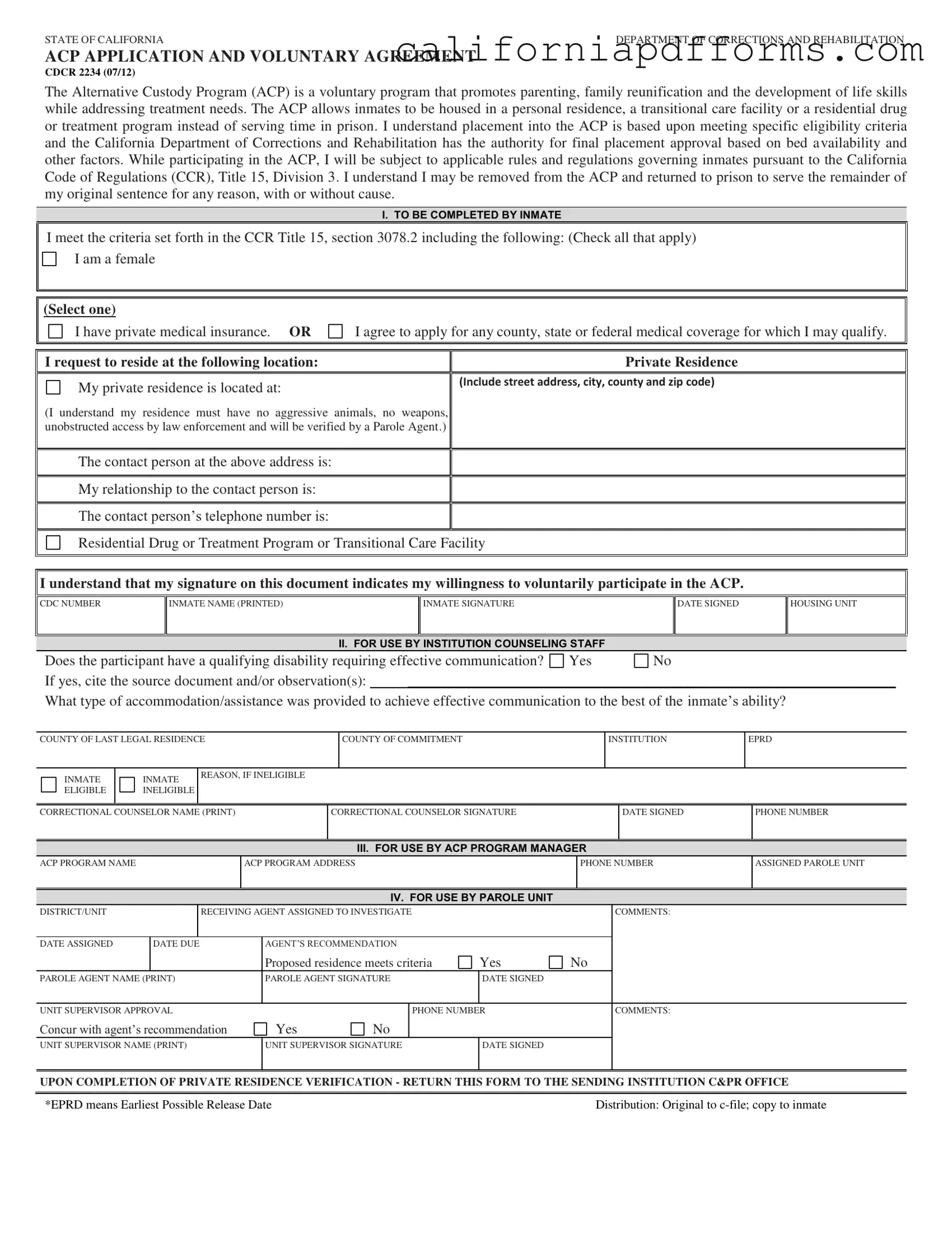What is the California Alternative Custody Program (ACP)?
The California Alternative Custody Program (ACP) is a voluntary initiative designed to support inmates in their journey towards rehabilitation. It focuses on parenting, family reunification, and the development of essential life skills. Instead of serving time in a traditional prison setting, eligible inmates may be housed in a personal residence, a transitional care facility, or a residential drug or treatment program. This program aims to address the treatment needs of inmates while allowing them to maintain connections with their families and communities.
Who is eligible to participate in the ACP?
Eligibility for the ACP is determined by specific criteria outlined in the California Code of Regulations, Title 15, section 3078.2. Generally, candidates must meet the following requirements:
-
Be a female inmate.
-
Have private medical insurance or agree to apply for any applicable county, state, or federal medical coverage.
-
Request to reside at an approved location, such as a private residence or a transitional care facility.
It is important to note that final placement approval rests with the California Department of Corrections and Rehabilitation, which considers bed availability and other factors.
What are the rules and regulations during participation in the ACP?
While participating in the ACP, inmates must adhere to all applicable rules and regulations as outlined in the California Code of Regulations, Title 15, Division 3. This includes compliance with the conditions of their placement and any additional requirements set forth by the program. Failure to comply with these rules may result in removal from the ACP and a return to prison to serve the remainder of the original sentence.
What happens if an inmate is removed from the ACP?
If an inmate is removed from the ACP, they will be returned to prison to complete their original sentence. This can occur for various reasons, which may or may not be disclosed. The decision to remove an inmate is at the discretion of the program administrators and is not limited to any specific causes. It is crucial for participants to maintain compliance with all program requirements to avoid this outcome.
How can an inmate apply for the ACP?
Inmates interested in applying for the ACP should complete the California Alternative Custody form (CDCR 2234). This form includes sections where inmates can indicate their eligibility, desired residence, and provide necessary information about their support system. Once completed, the form must be submitted to the appropriate institution counseling staff for review. The process involves several steps, including verification of the proposed residence and approval from a parole agent, before final acceptance into the program.
